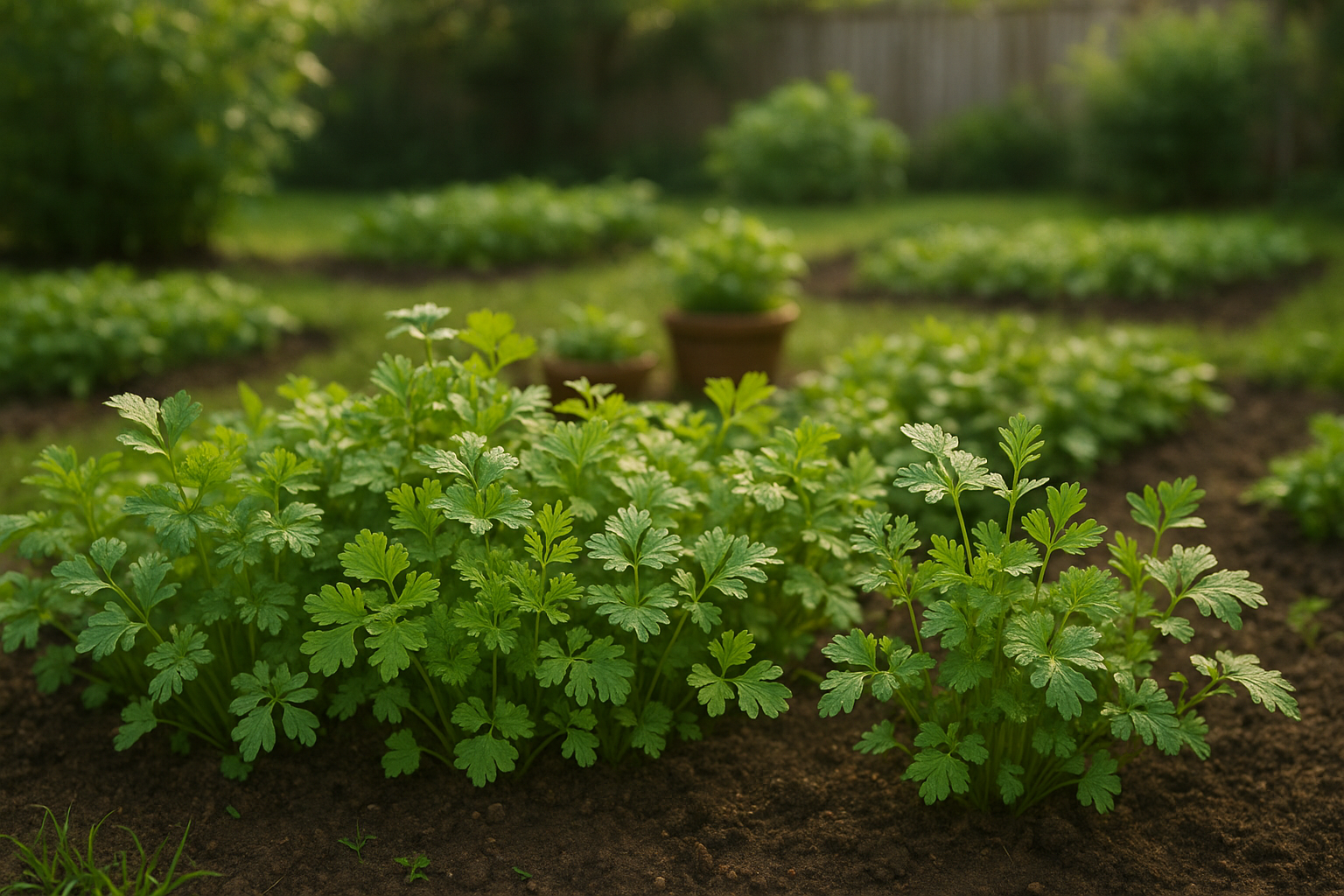Introduction to Cilantro Varieties
When it comes to spicing up your home garden, knowing the best cilantro varieties can make all the difference. Cilantro, also known as coriander in some parts of the world, is a bright, leafy herb cherished for its fresh, citrusy flavor that elevates salsas, curries, and salads. Its versatility and fast growth make it a favorite among home gardeners, whether you’re planting in pots on your balcony or dedicating a patch in your backyard.
But did you know that not all cilantro is created equal? There are several cilantro varieties, each offering unique flavors, aromas, and varying tolerance to weather and disease. Some bolt quickly in the heat, while others can withstand the summer sun; some have bold, zesty flavors, while others are more subtle. Choosing the right cilantro type can impact both your harvest and how your dishes turn out in the kitchen.
In this blog post, we’ll break down the best cilantro varieties suited for different growing conditions, tastes, and gardening experience levels. Whether you want a slow-bolting variety for hot climates or you’re looking for that classic cilantro kick, we’ve got expert tips and examples to guide you. Let’s discover which cilantro variety will thrive in your garden and on your table.
What Makes a Cilantro Variety ‘The Best’ for Home Gardening?
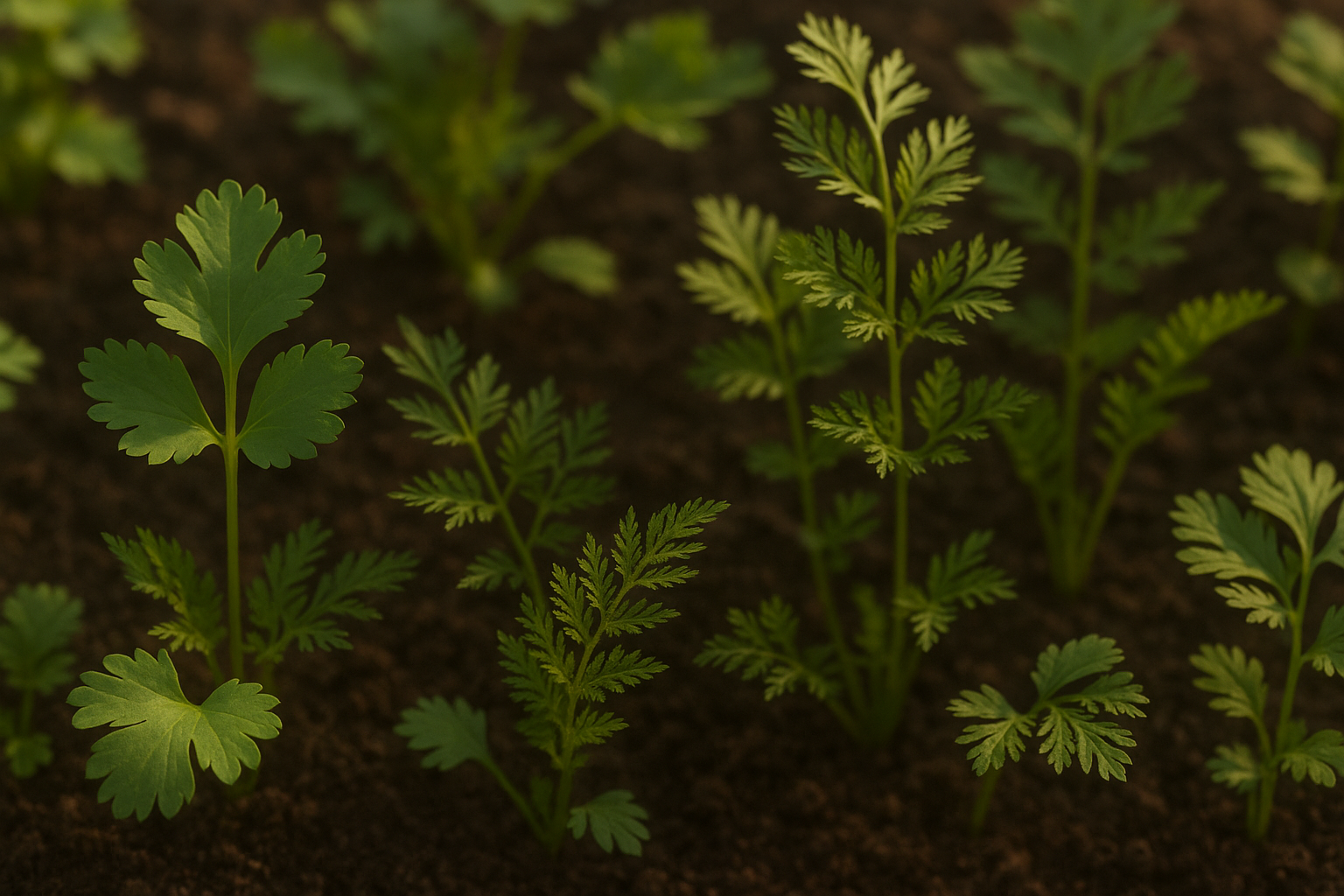
Choosing the best cilantro variety for your home garden depends on a few essential traits that make your gardening more rewarding and your harvests more useful in the kitchen. Bolt resistance is a top priority, especially if you live in a warm climate; heat causes cilantro to flower (bolt) and stop producing leaves quickly. So, look for varieties labeled as “slow-bolting” like ‘Calypso’ or ‘Santo.’
In cooler climates, most varieties will last longer before flowering, but you’ll still appreciate plants that offer lush, abundant foliage. Leaf size and shape matter too—broader leaves are easier to chop and often yield more flavor per plant, making them ideal for bulk recipes or large salads.
Growth habit also affects space and harvests: compact varieties are great for containers or small beds, while sprawling types can fill out a bigger garden patch. Match your choice to your main culinary goals—if you love fresh salsa or garnish, pick a leafy type bred for big, tender leaves; if coriander seed is your aim, select a variety known for reliable and aromatic seeds.
Try a few types in your garden to discover which thrives in your microclimate and suits your kitchen preferences. Don’t hesitate to reseed every few weeks during warmer spells to keep a steady supply of fresh cilantro all season long.
Most Popular Cilantro Varieties for Home Gardens
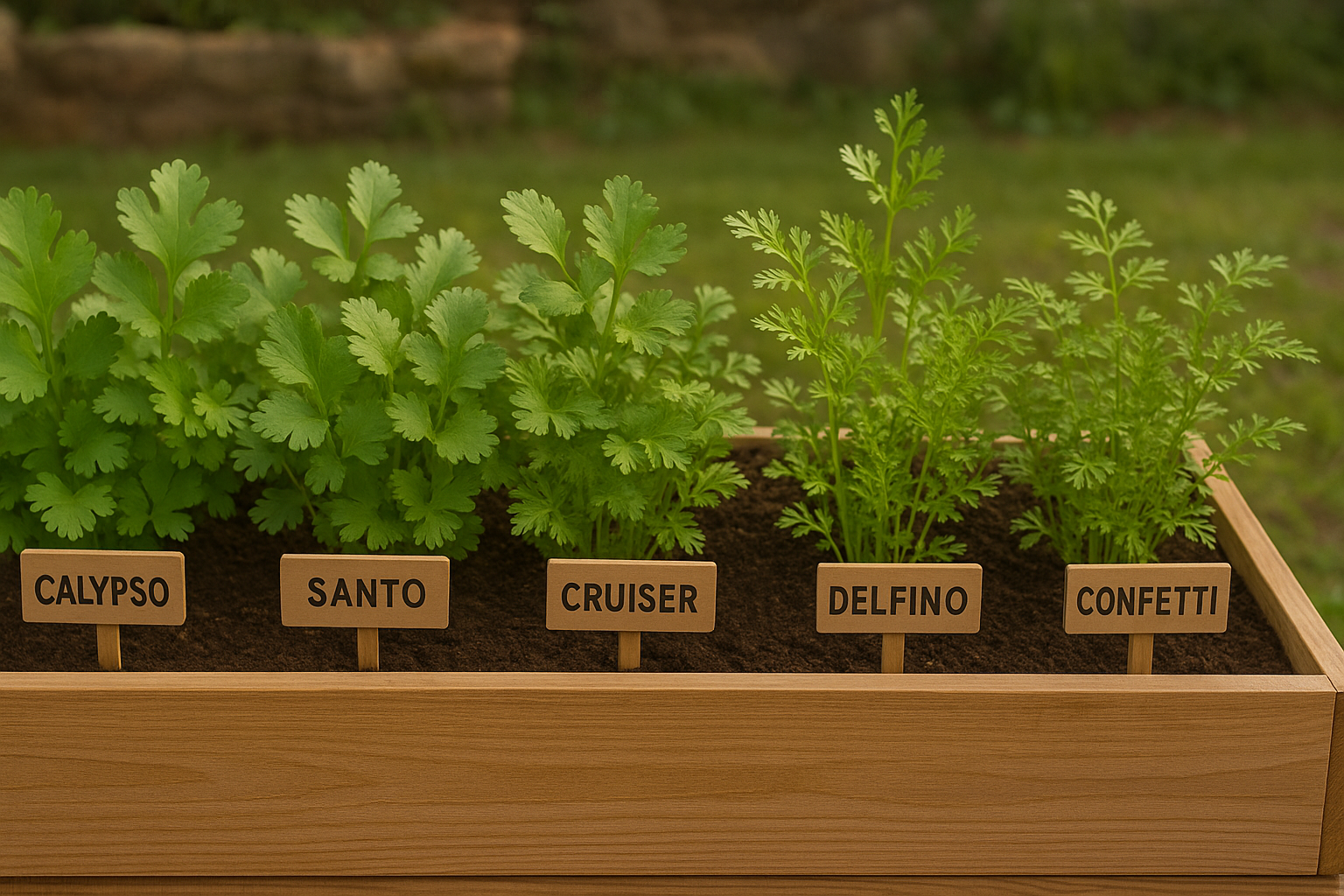
When choosing cilantro for your home garden, several popular varieties stand out for their unique qualities and ease of growing.
Calypso is a favorite among gardeners because it’s slow to bolt, meaning it stays leafy longer in warm weather—a big perk for beginners. Its dark green leaves are broad with a classic, robust cilantro flavor, and it’s ready for harvest in about 50 days.
Santo is another widely planted cultivar, known for its strong stems, uniform growth, and good resistance to bolting. It matures in about 52–55 days and has a bright, citrusy-pungent flavor, perfect for salsas or garnishes.
Cruiser offers large, thick leaves with a clean, mild herbal taste and matures around 50–55 days. Its upright habit makes harvesting easy and reduces disease risks.
Delfino is loved by gardeners for its finely cut, feathery leaves that look almost like dill but deliver a sweet, aromatic cilantro punch in just 50 days. It’s great for garnishes and container gardens.
Leisure is a dependable, beginner-friendly choice, maturing in about 50 days. It’s beloved for its traditional flavor and consistent yields and is great for repeated cuttings.
Confetti stands out for its fern-like, delicate foliage, similar to chervil, that adds a novel texture and mild cilantro kick to dishes, particularly suited for salads.
Each of these cultivars offers unique benefits, whether it’s bolt resistance, distinctive leaves, or reliable yields, making them excellent picks for gardeners looking to enjoy fresh cilantro all season long.
Unique or Uncommon Cilantro Types Worth Trying
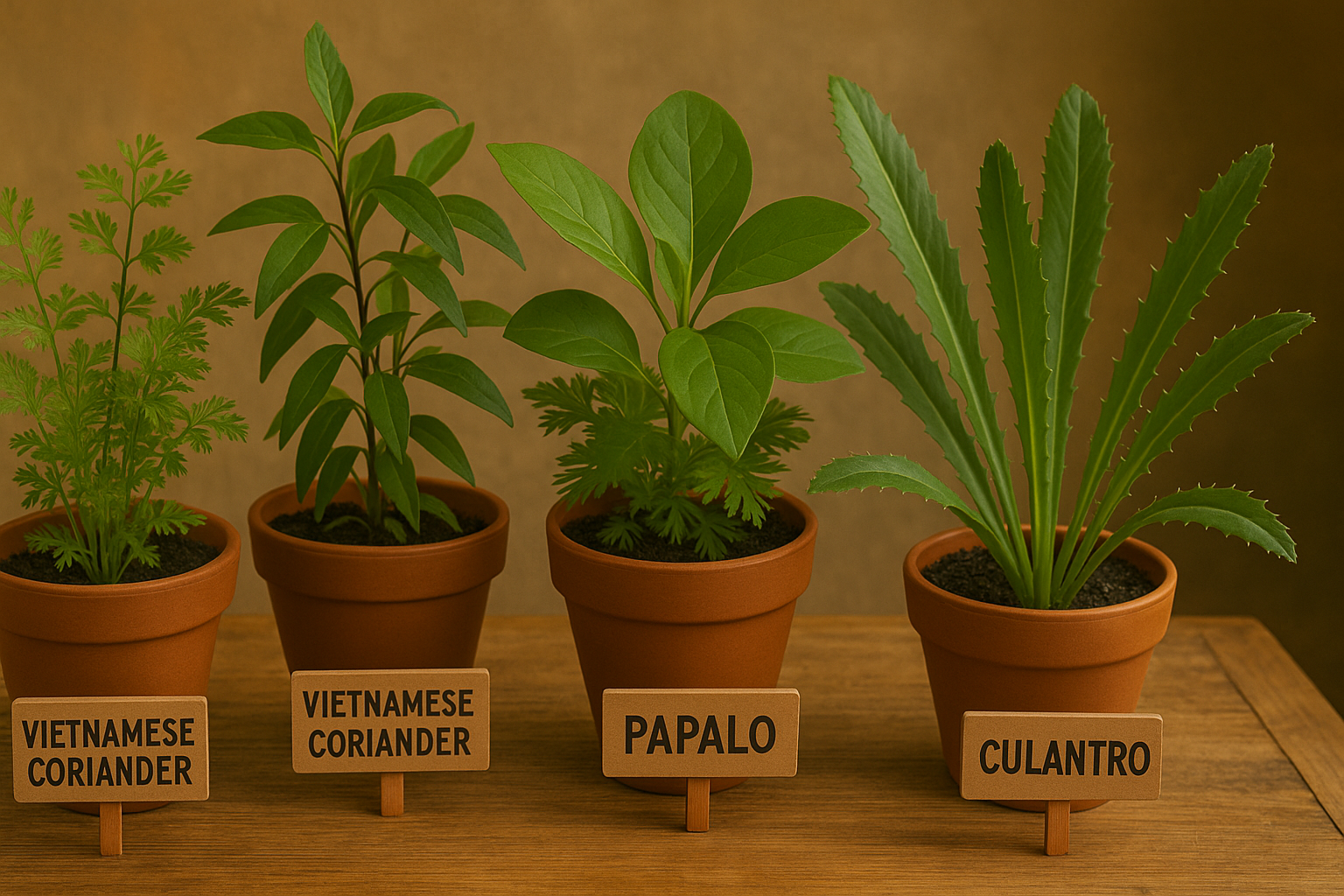
If you love the fresh, citrusy punch of cilantro but want to branch out, exploring unique or lesser-known types can add some adventure to your garden and kitchen. Moroccan cilantro, for instance, has a slightly sweeter and milder flavor than the common cilantro you find in grocery stores. It’s particularly well-suited for hot climates because it bolts less quickly.
For those who crave bold, peppery notes, Vietnamese coriander (also called Rau Ram) thrives in humid and warm conditions that would stress regular cilantro, making it perfect for summer herb gardens. Its distinctive, spicy profile is a staple in Southeast Asian dishes like Vietnamese salads and soups.
For something truly out of the box, try Papalo, a pungent herb from Mexico with a robust, almost lemony flavor. Its broad leaves are commonly used in tacos and salsas, and it withstands hot, arid gardens where cilantro would wilt.
Lastly, culantro, with long, serrated leaves and an intense, almost medicinal cilantro aroma, is essential in Caribbean and Latin American cooking. It’s shade-tolerant and far more heat-hardy than standard cilantro.
Experimenting with these cilantro cousins not only adds diversity and resilience to your herb plot but also lets you explore authentic dishes from around the world—so you’ll never get bored with your flavor palette, no matter the weather or culinary craving.
Matching Cilantro Varieties to Cooking Styles and Dishes
Choosing the right cilantro variety can elevate your cooking, as different types offer unique flavors and strengths that complement various cuisines.
For fresh salads or delicate salsas, milder cilantro varieties like Calypso or Delfino are ideal—their tender leaves and subtle, citrusy notes enhance dishes without overpowering them. Try using these tender varieties in Vietnamese spring rolls, Mediterranean tabbouleh, or light avocado salads for a fresh, balanced flavor.
On the other hand, bolder varieties such as Santo and Leisure bring a more intense, peppery taste perfect for hearty and spicy fare. These work well with robust dishes like Mexican carne asada, Indian chutneys, or Thai curries, standing up to strong spices and high heat in cooking.
Don’t overlook cilantro seeds, known as coriander, which are widely used as a seasoning in both whole and ground forms. Coriander seeds lend warm, nutty tones to spice mixes, marinades, and baked goods—think classic garam masala or Moroccan tagines.
By matching cilantro’s variety and form to the style of cuisine and dish, you bring out the best in each ingredient and enrich the overall flavor profile of your meals.
Growing Tips for Thriving Cilantro at Home
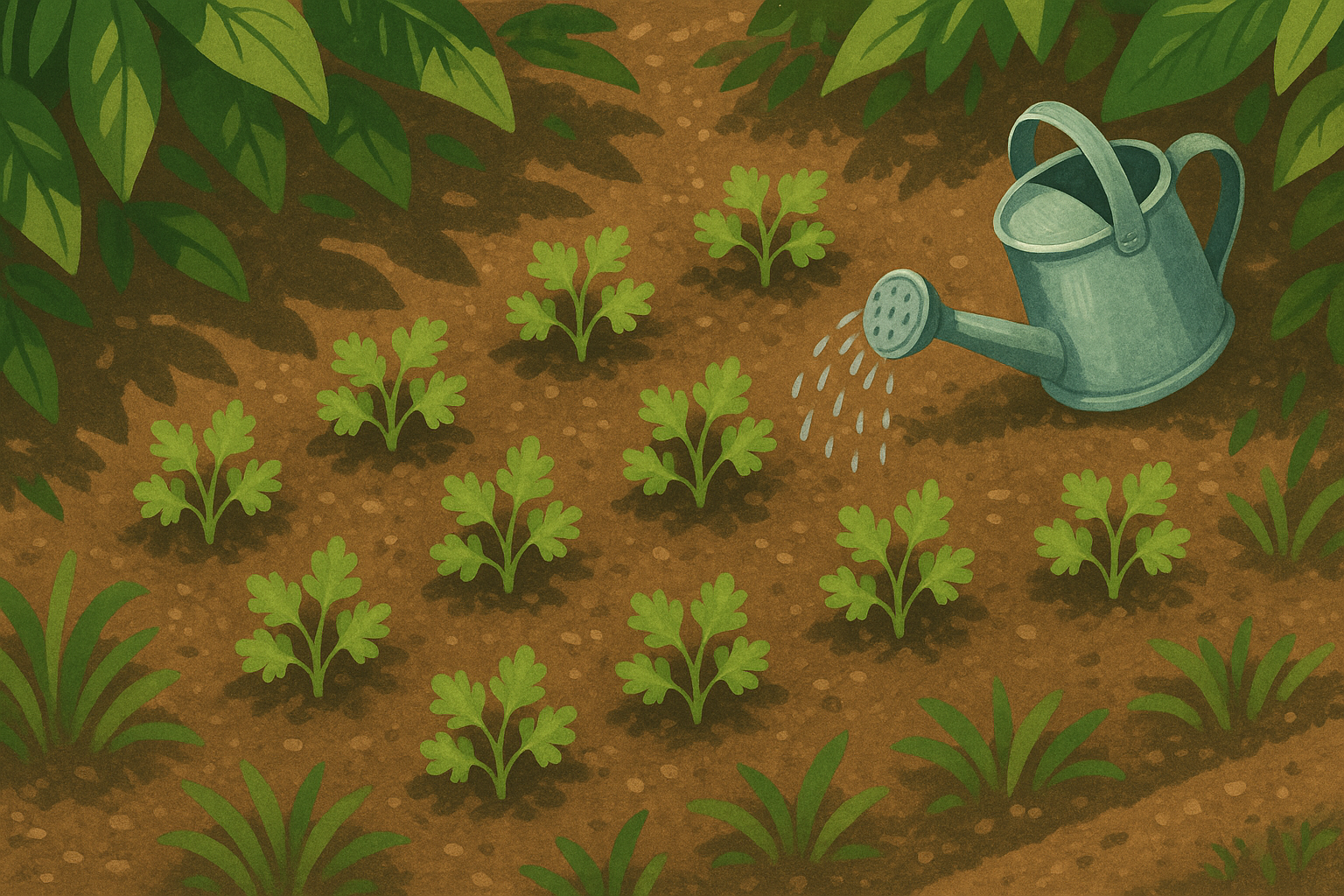
Growing vibrant cilantro at home is easier than you might think, as long as you pay attention to a few simple needs. Start with well-draining, fertile soil—mix in compost or organic matter to boost nutrients and improve texture.
Cilantro thrives in cool weather and loves full sun but will tolerate light afternoon shade, especially in warmer climates, to prevent bolting. Water consistently so the soil stays moist but not soggy, as cilantro hates to dry out or sit in waterlogged conditions.
Each plant should have about 6–8 inches of space to allow its leafy greens to spread and prevent overcrowding. This helps with airflow and reduces disease.
You can grow cilantro from either seeds or seedlings, but seeds are often preferred since the plants have long taproots and don’t always transplant well. For a steady supply, practice staggered sowing: plant small batches of seeds every 2–3 weeks so you’ll always have fresh leaves coming up.
When it’s time to harvest, snip the outer leaves first, cutting from the base of the stem—this encourages the plant to keep producing for several weeks. Aim to harvest in the morning when the oils—and thus the flavor—are strongest. If you notice flower buds forming, trim them off quickly to extend the life of your cilantro and prevent early bolting.
Storing, Using & Enjoying Your Cilantro Harvest
To keep your cilantro harvest fresh and flavorful, proper storage is key. For refrigeration, trim the stems and place the bunch upright in a glass of water, loosely covering it with a plastic bag. Change the water every couple of days, and your cilantro can last up to two weeks.
If you want to freeze cilantro, finely chop the leaves and pack them into ice cube trays, topping with a bit of water or olive oil. Once frozen, transfer the cubes to a resealable bag for easy access when cooking soups or sautés.
For long-term storage, drying is another great option. Tie the stems together and hang them upside down in a cool, dry place. Once dried, crumble the leaves and store them in an airtight container.
When it comes to using your cilantro, remember that different varieties offer unique flavors—some are citrusy and bright, while others have earthy undertones. Snip fresh leaves directly into salsas, chutneys, or atop tacos just before serving for the best taste. Try tossing chopped cilantro stems into stir-fries or curries for extra crunch and aroma.
Don’t be afraid to experiment—swap cilantro for parsley in pesto, or blend it with yogurt and lemon for a quick, herby sauce. Share your favorite uses and recipes with friends or online communities to discover new ways to enjoy this versatile herb!
